Jim Jones & The Jonestown Massacre
Don't drink the Kool-Aid.
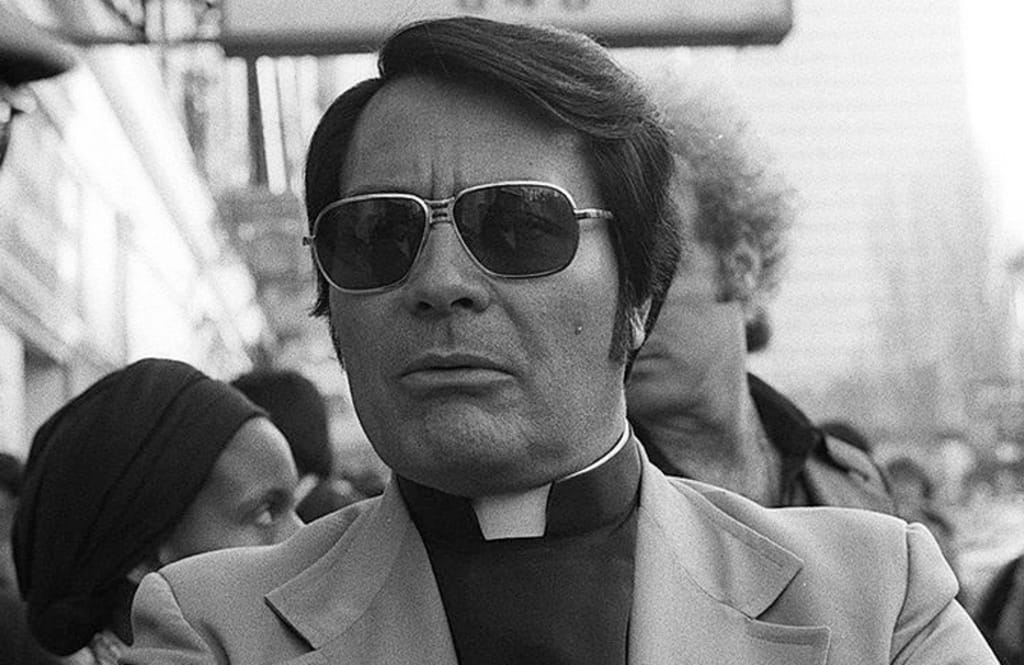
WARNING: this article contains graphic content & images, including an audio recording of the mass suicide at Jonestown which may be disturbing to some people.
Do you ever wonder where certain expressions come from? "Apple of my eye," comes from a bible verse, "bite the bullet," comes from soldiers being given a bullet to bite prior to undergoing surgery. What about the expression "drinking the Kool-Aid?" Unlike the other phrases, this one has a more sinister backstory.
It was 1951 in Indianapolis, Indiana. A man named Jim Jones was attending a gathering for the Communist Party USA with his mother. Following the meeting, the two experienced harassment for their beliefs, and this wasn't the first time that this had happened. In addition to the backlash he faced from the public, Jim had grown frustrated with the Communist Party itself. He was unimpressed with how the party was operating and the ostracism of open communists in the United States. He wanted a way to express Marxism based on how he felt it should be run, but how? His initial thought was to infiltrate the church seeing as religion has a large impact amongst people. A Methodist superintendent helped him get started in the church community despite knowing that Jim was a communist. Jim witnessed a faith-healing service at the Seventh Day Baptist Church and observed how well it attracted people and their money. He then concluded that with financial resources from such healings, he could help accomplish his social goals.
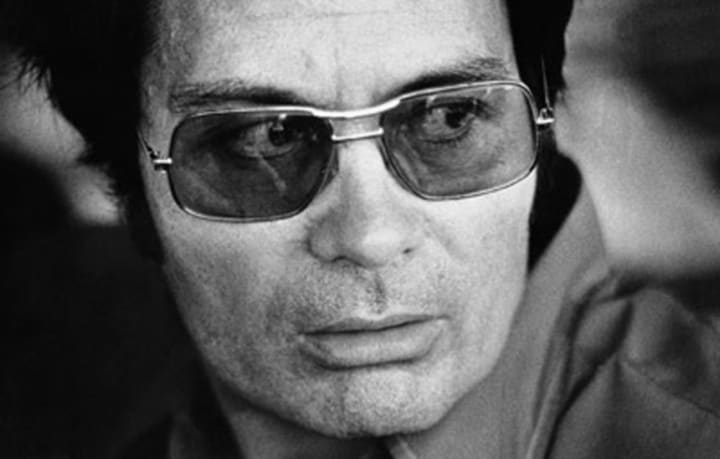
James Warren Jones was an American religious leader who was responsible for a mass suicide in Jonestown, Guyana.
Let's take a step back and look at who Jim Jones was and why was he so fond of Marxism.
Jim Jones was born in 1931 to World War I veteran James Thurman Jones and Lynetta Putnam. Due to the Great Depression, the Jones family had to live in a shack with no plumbing or basic necessities. As a child, Jim was a very enthusiastic reader and studied historical figures such as Joseph Stalin, Karl Marx and Adolf Hitler. He developed a strong interest in religion, primarily because he found it difficult to make friends. Jim was described as a "really weird kid who was obsessed with religion and death." Childhood acquaintances alleged that he frequently held funerals for small animals in his backyard and had even stabbed a cat to death. Jim's father was an alcoholic who was associated with the Ku Klux Klan but despite that, Jim sympathized with the country's repressed African-American community, likely due to his own experiences as a social outcast. The two butted heads on the issue of race and Jim stopped speaking to his father for several years after he refused to allow one of Jim's black friends into the house.
Jim's parents separated and he went to live with his mother in Richmond, Indiana. He graduated high school and married Marceline Baldwin the following year. They moved to Bloomington where Jim attended the local university and in 1951 they moved again to Indianapolis, where he obtained a degree in secondary education.
It's not really clear as to why Jim was such a Marxist. Since there isn't a lot of background on his family, it's thought that mainly his parents influenced his beliefs. After all, Jim and his mother attended Communist Party gatherings together. As mentioned earlier, Jim intensively read about various communists, socialists and Marxists and noted the strengths and weaknesses of each. Perhaps it was a combination of his parents and literature that influenced his beliefs.
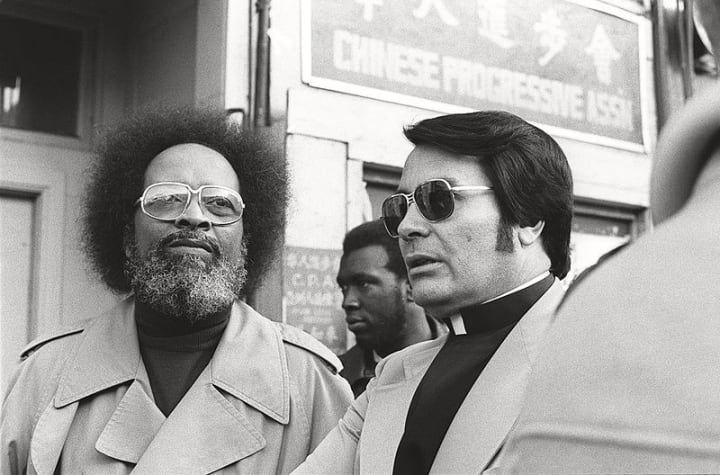
In 1955, Jim set out to launch his own church. In order to draw the crowds, he needed a religious headliner who was capable of attracting people. He sought out Reverend William M. Branham, a healing evangelist and religious author, and offered to share the church with him in exchange for hosting a gathering. They organized a convention in June and following the event, Jim finally launched his own church called the People's Temple.
Jim's mission was simple: racial integration. He was appointed director of the Human Rights Commission by the Indianapolis mayor and helped integrate several churches, restaurants, police departments and hospitals. After swastikas were painted on the homes of two African-American families, Jim went around the neighbourhood comforting the locals. Him and his wife Marceline adopted several non-Caucasian children which they referred to as their "rainbow family." But despite Jim's humanitarian causes, he faced a lot of criticism. White-owned businesses and locals were disgusted with his actions and he experienced several personal attacks including a swastika drawn on the Temple and a dead cat thrown at his house.
In 1961, Jim traveled with his family to Brazil with the idea of setting up a new Temple location. After a speech about a nuclear apocalypse and reading an Esquire magazine article listing Belo Horizonte as a safe place in a nuclear war, Jim decided that this would be the best place for the Temple. Jim and his family stopped in Guyana before continuing on to Brazil and became fond of the area. During his time in Brazil, Jim studied the receptiveness of racial minorities to his message while being careful not to portray himself as a communist and speaking of an apostolic communal way of living rather than a Marx lifestyle. His family helped out with impoverished residents in Rio de Janerio and while he liked the community, he decided that if he expanded the Temple, he would do so in Guyana. Eventually they moved back to the United States after receiving a message that the Temple was about to collapse without him. Jim decided to move the Temple to Redwood Valley, California in 1965 and opened other branches in Los Angeles and San Francisco in the early 1970s.
Upon moving back to California, Jim began dismissing traditional Christianity as a "fly away religion" and rejecting the bible as a tool used to oppress women and people of colour. He talked about the details of his own religion called "Apostolic Socialism," preaching that "if you're born in capitalist America, racist America, fascist America, then you're born in sin. But if you're born in socialism, you're not born in sin." Basically he was saying that socialism was the correct way to live in compliance with God's will.
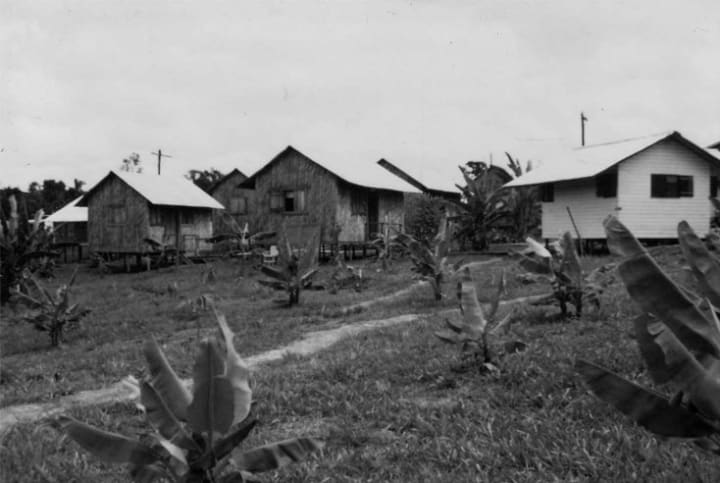
Houses in Jonestown.
In 1977, Jim and several hundred Temple members moved to the Temple's compound in Guyana. They built a community called the People's Temple Agricultural Project, which would later become known as the infamous Jonestown, named after Jim Jones himself. They claimed that it was a "socialist paradise" and a "safe haven" from the media scrutiny in San Francisco. While Jim promoted Jonestown as a benevolent model communist community, members were not allowed to leave. It wasn't long until Jim began propagating his belief in what he called the "Translation." He claimed that he and his followers would all die together and move to another planet and live blissfully.
Back in America, many of Jim's followers who did not move to Guyana began dismissing his credibility. While he was still respected by some for setting up a racially-mixed church, his authority had been decreasing ever since he moved to the isolated commune in the jungle. Many former members of the People's Temple began coming forward with allegations of abuse that occurred during their time in the community. Shortly after, friends and relatives of people living down in Jonestown also came forward expressing their concerns that their loved ones might "be trapped against their will" in the community. Together, they formed the Concerned Relatives group and travelled to Washington, D.C. to visit with state department officials and members of congress. They distributed a packet of documents titled the "Accusation of Human Rights Violations by Rev. James Warren Jones" to members of the press, congress and those who still belonged to the People's Temple in America. It was hard to take the claims seriously at first, seeing as no one had contacted any of the people in Jonestown, but then a woman named Deborah Layton came forward. She managed to escape and return home to America. She confirmed the allegations of human rights violations, stating that the Temple had committed crimes - using members against their own will to do so - and that living conditions in Jonestown were extremely poor.
Meanwhile back in Jonestown, Jim's health began declining. He suffered from a lung infection and on tape recordings of community meetings, he frequently complained of high blood pressure, minor strokes, rapid weight loss and temporary blindness. He could often been heard on the tapes slurring or not finishing his sentences, indicating that he had suffered some permanent damage from the strokes. Allegedly, Jim had also been abusing drugs including LSD, Valium and other various sedatives. This is believed to have contributed to his deteriorating health. Many today believe the abuse is responsible for permanently altering Jim's state of mind, making him constantly paranoid. It's from this paranoia that Jonestown reportedly turned into into a community of terror and repression.
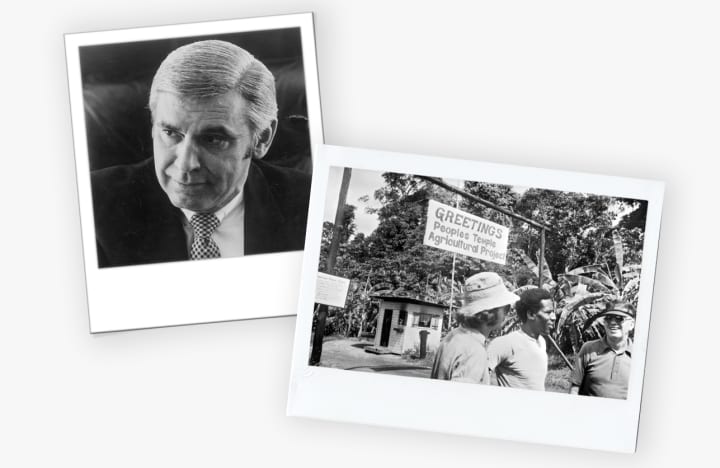
Congressman Leo Ryan, former member of the U.S. House of Representatives
from California's 11th district.
In 1978, congressman Leo Ryan decided to lead a mission to Jonestown to investigate the allegations of human rights violations. He brought with him a few relatives of Temple members, an NBC camera crew and reporters for various newspapers. They arrived in Georgetown, Guyana on November 15, then two days later they travelled by a small plane to Port Kaituma where they were then transported to the Jonestown settlement. Jim hosted a welcoming party for them at the central pavilion where Leo got the chance to chat with several members whom he had been asked to check up on by the Concerned Relatives group. But unfortunately not everyone was enthusiastic about Leo and his delegation visiting. The next day, Leo was attacked by Temple member Don Sly with a knife. This brought the trip to an abrupt end. Before leaving Jonestown, Leo mentioned that he would report back to the Concerned Relatives group that the community was "in basically good terms." He stated that none of the 60 relatives he had targeted for interviews wanted to leave, however 15 other Temple members expressed a wish to leave with them. At the time, Jim made no attempt to stop them from leaving but things wouldn't be that easy.
As members of the delegation began boarding two planes at the Port Kaituma airstrip, armed guards arrived and began shooting at them. Jim had sent the guards after the group to deliver a message about "taking his children." Five people were killed at the airstrip: Leo Ryan, NBC reporter Don Harris, NBC cameraman Bob Brown, San Francisco Examiner photographer Greg Robinson and Temple member Patricia Parks.
The remaining survivors managed to get away & flew back to Georgetown. Jim had been giving a speech to Temple members about the betrayal of Leo Ryan and his delegation and those who chose to leave with him, when he received the news from one of the guards that the congressman had been shot dead. Jim went into panic mode, indicating that despite wanting to take aggressive action, he might not have been aware of the guards' intentions to kill the group. For several months Jim had been talking about the Temple migrating to the Soviet Union and that there were outside intelligence organizations allegedly conspiring against the Temple. He believed that men would "parachute in here on us," "shoot some of our innocent babies" and "they'll torture our children, they'll torture some of our people here, they'll torture our seniors." Upon hearing about Leo's death, Jim informed Temple members that the Soviet Union would no longer take them after learning about the airstrip murders. It seemed that there was no other option for them. There was only one answer: death.
Later that day, the 909 inhabitants of Jonestown, 304 of them children, committed a mass suicide and died from cyanide poisoning. Members prepared a mixture in a large metal tub consisting of grape Flavor Aid poisoned with Valium, chloral hydrate, cyanide and phenergan. While many Temple members willingly drank the deadly concoction, there were many that resisted and were forced to consume it. Some were physically restrained and had the liquid poured down their throats, and others were forced to drink it at gun point.
Following what became known as the Jonestown Massacre, FBI investigators recovered a 45-minute tape recording of the final meeting Jim had with Temple members and the suicide in progress.
WARNING: THE FOLLOWING RECORDING CONTAINS GRAPHIC CONTENT. AROUND MINUTE 26 IS WHEN THE MASS SUICIDE BEGINS. DO NOT LISTEN IF THIS MAY BE DISTURBING TO YOU.
The following portion of this article describes what can be heard on the tape. Fair warning, there is highly disturbing content ahead.
The recording began after Leo Ryan, his delegation and several Temple members left to go back to the airstrip. Jim sent armed guards after them because he believed that aggressive action was needed. He felt that Leo was "stealing his children," commenting that he was hurt & disappointed by his actions. He told the community that they had been betrayed and suggested that if they couldn't live in peace that they should all die together in peace, referring to the "Translation." Multiple people can be heard cheering and agreeing with him on the tape.
Jim stated that once Leo and the others got back to Georgetown, they would alert the authorities and Jonestown would become an immediate target. He feared that other outside groups like Leo's would come to the community and take away more of his children. Throughout the tape, he continuously reassures the Temple members that he has never lied to them and insists that they should believe him on this. He claimed that they wouldn't be committing suicide; it would be a revolutionary act and they should all "lay down their lives in protest to what has been done."
Then in comes Christine Miller, considerably the most pivotal moment heard on the tape.
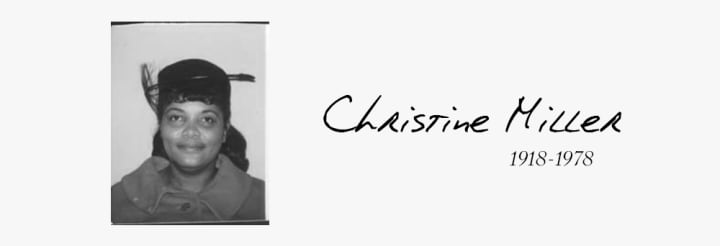
Christine asked Jim about travelling to Russia, in regards to Jim telling the community about a potential migration to the Soviet Union. Jim replied to her saying that this wouldn't be possible anymore. Christine commented that too few people had left with Leo to justify the hundreds left in the community taking their lives. She was instantly met with a hostile crowd, many screaming "You're just like them!" or "You're too afraid to die!" Jim claimed that life without him had no meaning and the audience rejoiced. Christine said she wasn't afraid to die but insisted that the young deserved to live. Jim retorted that they deserve peace by dying with the rest of the community because he could no longer give them the peace he originally wanted to. Christine cautiously told Jim that she would prefer to die on her own terms and the crowd erupted in anger. Jim calmed down the crowd and told them that Christine had the right to her own opinion but that she'd "regret not dying today."
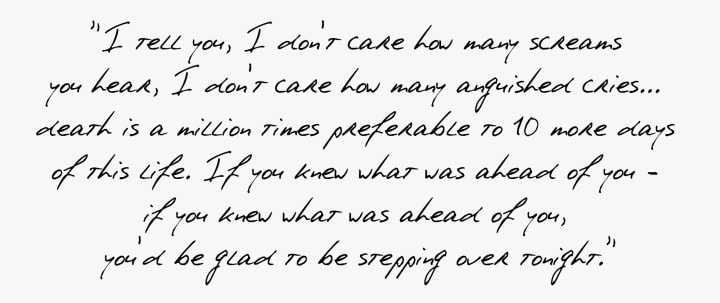
Other Temple members began sharing their opinions, many of them in favour of Jim's plan and thanking him for what he's done. One person can be heard saying "I'm ready to go. If you tell us that we have to go, then we're ready to go." One woman talked about how at one point she felt the same way Christine did but after seeing several members leave the community with Leo, it broke her heart. She said "over all these years, they've been with us but they haven't been a part of us ... we might as well end it now." Jim spoke up again, commenting that it was white people who left the community, which gained applause from majority of the African Americans in the Temple.
Then suddenly, the tape cuts.
One of the armed guards can be heard informing Jim that "the congressman has been murdered." Jim started blubbering when told about the number of casualties at the airstrip, including the death of Temple member Patricia Parks.
Then suddenly, Jim can be heard urging people to "please get us some medication! Please! Before they get here!" It was time to go.

At the 26th minute on the tape, the suicide begins.
The drinks are passed out. A woman can be heard organizing people into rows, telling them to keep their children calm. She says, "they're just crying because it's a little bitter tasting, it's not because they're in pain!" In the background, children can be heard screaming and crying as the effects of the toxic drink begin to take affect.
A man can be heard telling his story to those who are reluctant to die. He talks about working as a therapist in the past and the idea of reincarnation. He promised that "choosing to step over to the other side is the best choice one can make ... you've never felt so good."
Jim continuously chimes in saying things such as "it's only hard at first" and "living is way more difficult!" A woman joins him and says that death is nothing to cry about; she says "don't cry, just thank our father!"
Many other members join in, sharing their stories and encouraging others to accept their death, when Jim interrupts and says "let's just get on with it, we've had enough of this world. We've lived through all of this, let's just be done with the agony of it," indicating his frustration that the process was taking too long. He assures everyone to just relax and that they'll have no problem "crossing over to the other side."
At the end of the tape, Jones concludes: "We didn't commit suicide; we committed an act of revolutionary suicide protesting the conditions of an inhumane world."
The final two minutes of the tape are silent; only somber music can be heard playing in the background.
As for Jim, he was found in a deck chair near the pavilion with what appeared to be a self-inflicted gunshot wound to the head.
And just like that, Jonestown ceased to exist. With so many deaths, it was the largest such event in modern history and resulted in the largest single loss of American civilian life in a deliberate act until September 11, 2001.
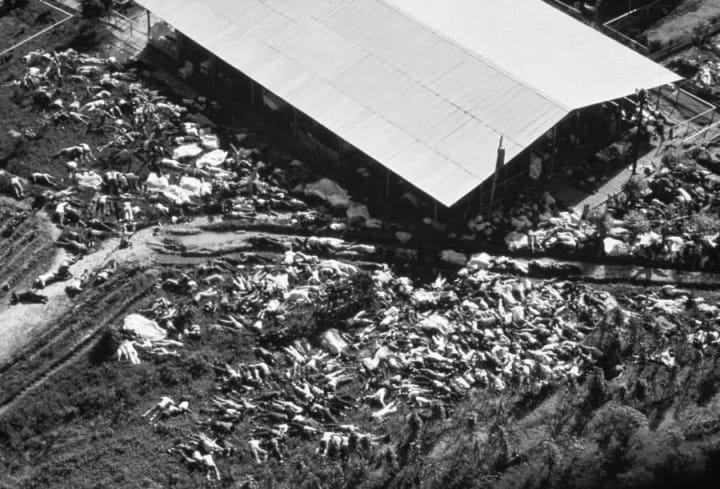
Aerial view of the aftermath in Jonestown.
After the Jonestown Massacre, there was one big question that many had on their mind: how was Jim Jones able to convince nearly a thousand people to take their own lives?
Despite popular belief, majority of people who join cults are mentally-sound and come from normal lives. That being said, when Jim first started the People's Temple, it wasn't marketed as a cult; it was a church, and one of the few to first integrate African Americans. Many people joined the People's Temple because it was a welcoming community during a time of racism and discrimination. They felt that it was a safe haven and they respected Jim for his goals of integration. Despite the communist aspects, the concept of an inclusive community during a racially segregated time seemed like a pretty good idea.
It seems that the ultimate demise of the People's Temple was Jim's paranoia. It had gotten the best of him and perhaps it had gotten the best of other Temple members too. As previously stated, many believe Jim's abuse of drugs contributed to his poor health and deteriorating state of mind. It's not completely out of the question to assume that other Temple members had also been abusing drugs and suffered permanent effects, including developing paranoia. It could also be linked to the poor living conditions in Jonestown; if there was no healthcare, members could've suffered psychological damage as a result of disease.
Jim was charismatic, passionate about his mission and able to gain the loyalty of minorities. Some believe he used race manipulation to convince Temple members to take their lives, publicly noting that it was white people who decided to leave with Leo Ryan's delegation. Because of the discrimination many African American members faced at the hands of white people, it's likely that these words really resonated with them. As for those who were reluctant to die, they might not have felt as oppressed or affected by Jim's words. Perhaps they sought refugee in the People's Temple because of the discrimination but they weren't willing to die for the cause; it might have just been a safe space for them at the time.
There are many theories about Jonestown and Jim's ability to manipulate so many people into committing a mass suicide. One thing that's for certain is that it was an extremely tragic loss and one of the most dangerous cults of all time.
The expression "drink the Kool-Aid" means to demonstrate unquestioning obedience or loyalty to someone or something. That is exactly what the people of Jonestown did and that is where the sinister phrase came from.
____________________________________________________________________________
Author's note: This was probably the darkest article I've written so far. I'm aware that it was unsettling to include the "Death Tape" and images of the aftermath but I don't believe in sugar-coating tragic events. I started testing the waters in my article about Robert Pickton by including crime scene photos and received feedback from a few friends that they'd be interesting in seeing more gritty content. I might lose a few readers because of this but it's important to not shy away from the reality. I will always do my best to remain respectful while still providing the truth.
On a lighter note, thank you to the person who sent me a monetary gift! Secondly, if you're still interested in story of Jonestown, I recommend watching the film "The Sacrament" and the "Drink the Kool-Aid" episode of American Horror Story: Cult for further enjoyment.
Resources
https://en.wikipedia.org/wiki/Jim_Jones
https://en.wikipedia.org/wiki/Jonestown
https://en.wikipedia.org/wiki/File:Peoples_Temple_Cult_Death_Tape_Q042.ogg
Documentaries
Jonestown: Mystery of a Massacre (1998)
Jonestown: Paradise Lost (2007)
About the Creator
Jenny Reed
Twenty-something based in Toronto. Lover of horror, true crime & pugs.

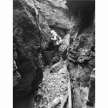



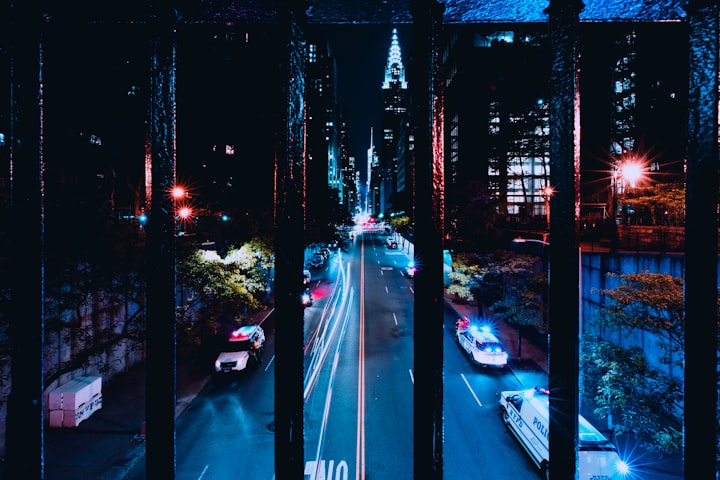

Comments
There are no comments for this story
Be the first to respond and start the conversation.